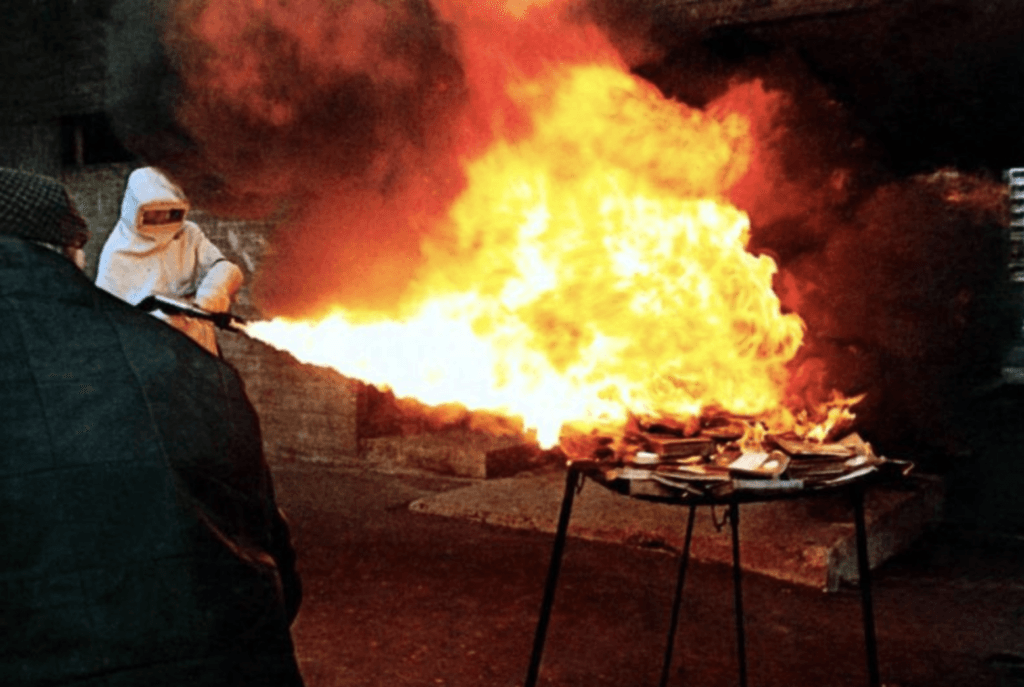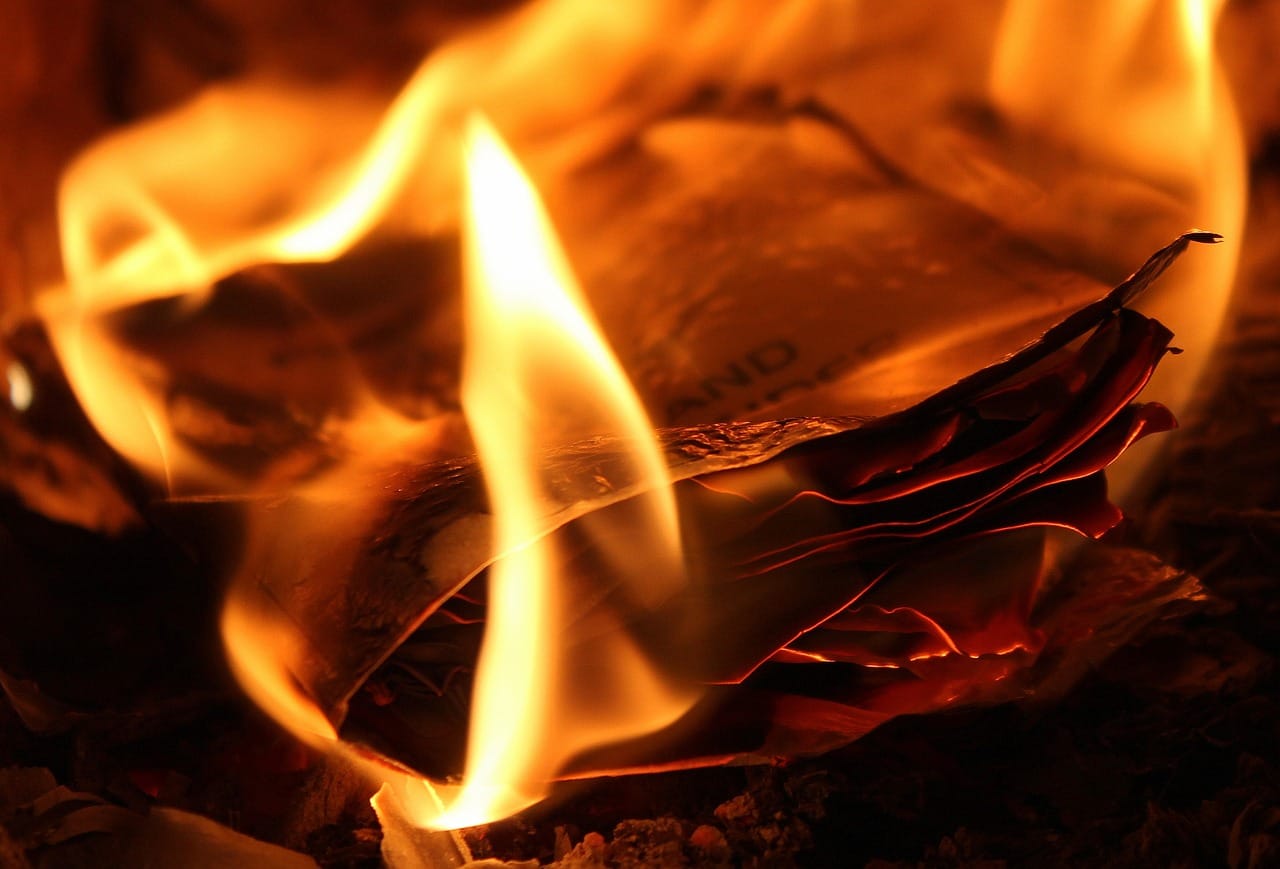There is a widespread theory on the Internet that the writer confused the Celsius and Fahrenheit scales when choosing the name for his dystopia. We decided to check if this is true.
The temperature indicated in the title of Bradbury's novel is not accidental, its meaning reveals itself in the epigraph: “451 degrees Fahrenheit is the temperature at which book pages ignite and burn to ashes.” Social network users write that the paper actually burns at 450 degrees Celsius and the writer incorrectly indicated the temperature scale (and even allegedly admitted his mistake!)VKontakte", Facebook*) and blog platforms (LiveJournal, "Zen", "Pulse"). You can find the story of Bradbury's mistake on educational portals and reviews Internet users. Mentioned it is also in some literary works modern authors.
How told In one of his interviews, Bradbury himself, in order to find out the temperature at which paper burns, he first contacted the University of California and then the University of South Carolina, but never received an answer. After that, he called the fire department, where they told him the meaning, which later ended up in the title of the novel.
The earliest mention of the theory of confused temperature scales that Verified could find is fast British writer Gary Dexter, published in 2009 on a blog on the Blogspot platform. There he notes that the burning temperature of paper is actually 450 ° C, citing a reference book Handbook of Physical Testing of Paper. It says that “the ignition temperature of paper is about 450°C, but this depends on the quality of the paper. The ignition temperature is 450 °C for viscose fiber paper, 475 °C for cotton fiber paper and 550 °C for fire-resistant cotton (treated with N-methyl-dimethyl-phosphonopropionamide).” Dexter therefore advised Bradbury to retitle the novel Fahrenheit 843 because it was "the approximate temperature at which rayon fiber, not treated with N-methyl-dimethyl-phosphonopropionamide, ignites and burns."
It is quite difficult to answer unambiguously the question at what temperature paper ignites and burns, since it depends on many factors. An important role is played by the material from which it is made, its density, age and other characteristics. Dexter writes about the burning temperature of paper made from viscose and cotton fibers, while books in recent decades have usually been printed on offset paper (this information can be found on the first pages or in the description of a specific publications V online store), consisting of wood cellulose. This kind of paper less durable, rather than cotton, which Dexter cites as an example, which means its combustion temperature is lower. Bradbury's novel was first published in 1953 in the USA, and at that time book printing was already widely used cellulose.

In the directory "Fire and explosion hazard of substances and materials and means of extinguishing them", compiled by the specialized publishing house "Reaping Science", the paper's ignition temperature is stated to be 230 °C, which is equal to 446 °F, which is quite close to the Bradbury version. Approximately the same ignition temperature of paper is indicated in the article Physical constants for investigators, published in the Australian Fire Investigators Journal: 218–246 °C (i.e. 424–474 °F). But the ignition temperature of photographic paper (obviously thicker) is already much higher: 365 °C, or 689 °F.
In 2022, an international team of researchers conducted experiment. In an attempt to develop methods for effectively restoring antique books damaged in fires, scientists created similar samples from tissue paper (that is, consisting of flax, hemp or nettle fibers and glued with gelatin), and then heated them under different conditions and temperatures. In all of the tests, the scientists needed significantly higher temperatures than 451°F to ignite, with an average of 570°F and higher. However, things didn’t reach 451 °C during the experiment either; even fabric paper began to burn earlier. Moreover, individual sheets, due to their larger contact surface with oxygen, burned faster at a lower temperature than a stack of paper simulating a closed book. Therefore, if Bradbury wanted to make a reference to the burning of books in the title, he should have taken into account that this would require higher temperatures.
As for the claims that the writer allegedly admitted his mistake with the temperature scales, “Verified” was unable to find any reliable evidence of this fact.
Thus, it is quite difficult to unambiguously answer the question at what temperature paper ignites and burns, since its composition, density, external conditions, etc. play a large role in this process. Nevertheless, many reference books on the fire hazard of materials and articles by fire experts provide figures close to what Bradbury names in the title of his novel. Additionally, Verified was unable to find conclusive evidence that Bradbury ever admitted to getting the temperature scales wrong. Therefore, even if the writer named the burning temperature of the paper not entirely correctly, it is unlikely that this is due to confusion between the Celsius and Fahrenheit scales.
*Russian authorities think the company Meta Platforms Inc., which owns the social network Instagram, is an extremist organization; its activities in Russia are prohibited.
Cover photo: pixabay.com
Read on the topic:
- Did Bradbury State: “There are worse crimes than burning books. For example, don’t read them?
- Is it true that the rubaiyat of Omar Khayyam was not written by Omar Khayyam?
- Is the collection of facts about the lonely death of the author of the book “How to Win Friends” Dale Carnegie and the misadventures of his colleagues true?
If you find a spelling or grammatical error, please let us know by highlighting the error text and clicking Ctrl+Enter.






